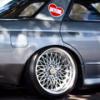R32 Spoiler Removal Problem
Announcements
-
Similar Content
-
Latest Posts
-
Hi guys, long time no post as per usual! It's been a busy year so far, the biggest thing being a new job. After 28 years in the automotive industry I decided it was time for a change. I was losing faith in the industry and where it's heading. Now in a completely different industry (electrical) working for a company that manufacture water pump contollers. Not as sexy as cars but it's an interesting, challenging industry. I now don't work Saturdays which is a bonus! It's still 50-55 hours a week but having Saturdays ack after 28 years of working them is awesome! No news on the GT-R but i did decide to add some more JDM goodness into my life.... 1990 300 ZX. She's not perfect but for a 35 year old car she ain't bad! Just going to tidy it up a bit and enjoy it. It's currently auto but will start stockpiling everything for a manual swap. It WILL distract me even further from the GT-R but im hoping not for too long! It somewhat proves a 6'8" freak can fit in a 300 ZX. Sort of... I drove it home from the previous owners house in Melbourne via Black Spur and Merton Gap (2 awesome bits of Victorian twisty road) and it was amazing! Handles so well!!! I don't think it would be worthy of a full build page but I'll post up some of the upgrades here if anyone is interested? Cheers guys!
-
By shubby0901 · Posted
End game is to: - Remove all the slop from old worn parts - Adjust setup so that the wheels actually fit and the car is drivable (currently it is not because of the extreme rubbing on the guards). Progress over the last couple of days, removed the rear hubs! Next steps: - Buy bushings - Replace bushings/bearings on hub - Reinstall -
By Dose Pipe Sutututu · Posted
Cracked deck And other cam snap stuff -
By TurboTapin · Posted
A few random issues have popped up since my last update. My WMI pressure sensor failed within about 10 minutes of it seeing liquid. It was a 20$ China special, so I'm not surprised. My name brand replacement should arrive today. My power steering assist also decided to crap out last weekend. The usual, works for about 60 seconds after starting the car then I lose it. I dusted off my old copy of NDS and connected to the HICAS ECU. Code 4 for assist solenoid.... I tested the solenoid and it's fine. I knew the day where my HICAS ecu would crap out would come, and I welcome it. It was the last HICAS part on the car that is now in the bin. I've ordered an SSR and I will control the power steering solenoid with my Haltech ecu. It will be nice to have proper speed referenced assist again after all these years.
-










Recommended Posts
Create an account or sign in to comment
You need to be a member in order to leave a comment
Create an account
Sign up for a new account in our community. It's easy!
Register a new accountSign in
Already have an account? Sign in here.
Sign In Now